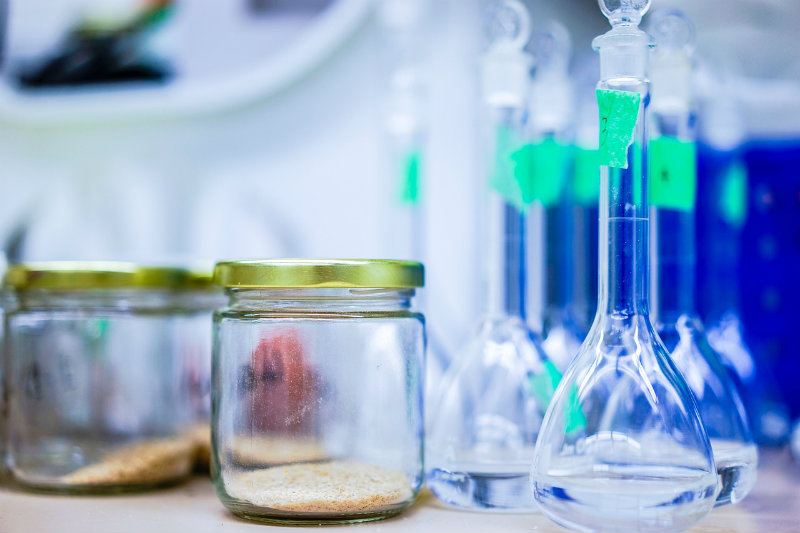Silanes in the role of adhesion promoters for paints, inks, coatings, adhesives and sealants
Source and credit: Peter G. Pape, in Applied Plastics Engineering Handbook, 2011
Organofunctional silane coupling agents function as adhesion promoters for PICA in a manner similar to the way they function as coupling agents for fiberglass and mineral-filled composites. In most cases the general conditions are similar, i.e., an organic polymer is to be bonded to an inorganic substrate. Bond failure mechanisms in PICA adhesion systems are similar to bond failure mechanisms in other silane adhesion promoter application. Moisture attack in the bonded interface region is a leading cause of loss of adhesion. A silane coupling agent with its dual functionality will operate at the interface to give improved adhesion when the bond is initially formed and then “protect” the bonded system from moisture-induced debonding and increase the useful life of the bonded systems.
Choice of the right coupling agent system for a PICA application requires similar thinking as was discussed for reinforced plastics. If chemical reactivity is present in the polymeric component in the material to be bonded, then matching the reactivity of the silane coupling agent with the reactivity in the polymer is very important. Choice of a silane system to maximize interpenetration of the coating into the silane network is also important. Silane recommendations for various polymers are useful for PICA applications as well. Blends of silanes, to give increased hydrophobicity, increased crosslinking of the silane structure and, to give increased thermal stability, can be used to improve the performance of the silane adhesion promoter system.
Silane adhesion promoters are applied to a PICA system in two possible ways—either as a primer on the substrate before the coating is applied or by addition directly to the coating system. When used as a primer, the silane is diluted in a solvent and sprayed, dipped, or wiped onto the inorganic substrate. Various solvents can be used: methanol, ethanol, isopropanol, an ether glycol, or sometimes a mixture of solvents. Ethanol is preferred over methanol for toxicity reasons. Water, at levels of 1–5%, is sometimes added to an alcohol solvent to promote hydrolysis of the silane during attachment to the surface. Usually there is enough residual moisture on the surface of an inorganic substrate to give hydrolysis and bonding of the silane to the substrate. Water can also be used as the solvent if the silane coupling agent is an aminosilane, since aminosilanes are soluble in water.
The concentration of silane in the solvent during application as a primer controls the thickness of the silane coating on the surface. Poor adhesion is obtained if the silane coating is too thick. A thick, crosslinked silane oligomer is a weak layer and the bond would fail in the silane layer. Poor adhesion is also obtained if the silane coating is too thin because not enough silane is present to give improved bond strength and water resistance. A concentration of 0.5% up to 10% silane in solvent can be used in a primer, but usually levels of 2–5% are used. Various concentrations are tested for optimum performance. Once the silane primer solution is applied, the solvent can be allowed to evaporate at room temperature or the coated substrate can be heated to drive off solvent more rapidly. Any application of heat should keep the temperature of the surface below 125 °C to prevent excessive crosslinking of the silane on the surface, which reduces interpenetration of the coating into the silane primer interphase region.
Silane primers are applied as a much thicker coating on a surface than are comparable silane treatments on fiberglass or mineral surfaces for reinforcement applications. While adjusting the concentration of silane in the carrier solvent can control the silane primer thickness, other organic additives can be mixed with the silane to give a primer. A blend of 10% epoxysilane with a hexamethoxy-melamine resin and a blend of 5% aminosilane with a styrene–butadiene latex are particularly useful silane-organic primer systems.
In an alternative method of application for a silane adhesion promoter, the silane can be mixed directly into the PICA system to be bonded to give “unprimed” adhesion. Silane levels of 0.5–5%, usually about 2%, are added to a coating system. Some techniques that are used to enhance the performance of the silane are partially prehydrolyzing the silane with water before adding it to the coating system so the crosslinked silane will be less soluble in the coating; modifying the cure system of the coating to allow the silane to migrate efficiently to the substrate; or choosing the functionality of the silane coupling agent to minimize interaction of the silane with the polymer system.
Get deeper insight to exciting hybrid silanes and silane modified technology through these expert recommended online trainings now:
Silanes and silane-modified technology for improved formulations in existing and new applications
Hybrid Silanes - Training with practical approach to improve your existing and new formulations

